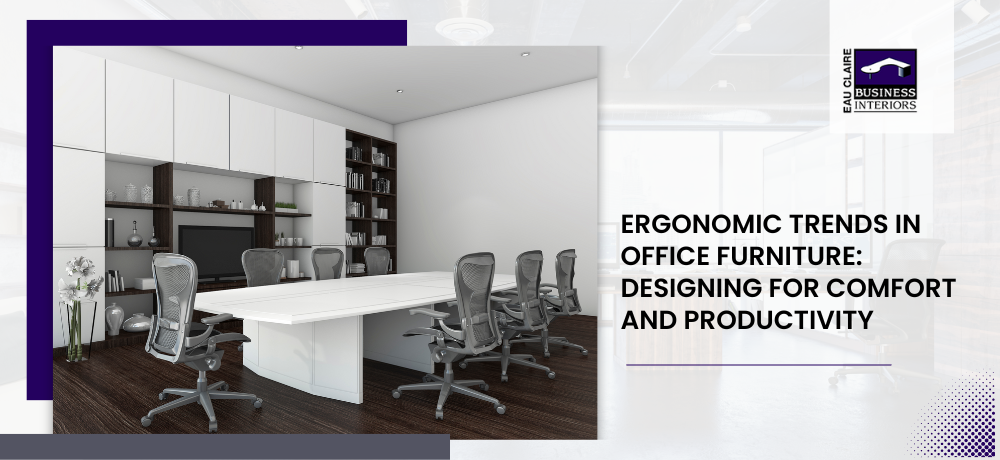Ergonomic Trends in Office Furniture: Designing for Comfort and Productivity

In today's modern workplace, creating a comfortable and ergonomic environment is crucial for the well-being and productivity of employees. Office furniture plays a significant role in achieving this goal. As we continue to prioritize health and well-being in the workplace, ergonomic trends in office furniture have emerged, revolutionizing the way we design and furnish our workspaces. In this blog post, Eau Claire Business Interiors will explore the latest ergonomic trends in office furniture and how they contribute to comfort, productivity, and overall employee satisfaction.
1. Adjustable Sit-Stand Desks:
The rise of adjustable sit-stand desks is a testament to the importance of movement and flexibility in the workplace. These desks allow employees to easily switch between sitting and standing positions throughout the day, promoting better posture, reducing the risk of sedentary-related health issues, and increasing energy levels. Look for desks with smooth height adjustment mechanisms and ample surface area to accommodate various work tasks.
2. Ergonomic Office Chairs:
Ergonomic office chairs have become a staple in modern workplaces, providing support and comfort for extended periods of sitting. Look for chairs with adjustable features such as height, seat depth, backrest angle, and lumbar support. Breathable and supportive materials, such as mesh or foam padding, can enhance comfort and airflow. Ergonomic chairs should promote proper posture, distribute weight evenly, and reduce strain on the back, neck, and shoulders.
3. Active Seating Options:
Active seating options, such as stability balls, kneeling chairs, and wobble stools, have gained popularity for their ability to engage core muscles and promote active sitting. These alternatives to traditional chairs encourage slight movement and balance, which can help improve posture and strengthen muscles. Incorporating active seating options in breakout areas or designated collaborative spaces provides employees with a change of posture and encourages movement during brainstorming sessions or informal meetings.
4. Task-Specific Workstations:
Task-specific workstations have emerged as an ergonomic trend that aims to optimize comfort and productivity for specific job functions. For example, height-adjustable workstations with integrated monitor arms and keyboard trays can be tailored for employees who spend a significant portion of their day on computer tasks. Specialized workstations, such as drafting tables or standing desks with tilted surfaces, can be designed for creative professionals or those requiring precision work.
5. Office Accessories for Ergonomics:
In addition to ergonomic furniture, the use of accessories can further enhance workplace ergonomics. These include monitor stands or arms to position screens at eye level, ergonomic keyboard, and mouse options, footrests for proper leg support, and document holders to reduce neck strain. Ergonomic accessories allow employees to customize their workstations to their individual needs and promote optimal comfort and efficiency.
6. Collaborative and Flexible Furniture:
Collaboration and flexibility have become integral aspects of the modern workplace. Incorporating collaborative and flexible furniture solutions encourages movement, adaptability, and spontaneous interactions among employees. Examples include modular seating arrangements, adjustable tables for team meetings, and mobile workstations that can be easily reconfigured. This flexibility promotes collaboration, teamwork, and the exchange of ideas while providing employees with a range of ergonomic options.
7. Biophilic Design Integration:
Biophilic design, which incorporates elements of nature into the workspace, has gained popularity for its positive impact on employee well-being and productivity. Integrating plants, natural materials, and organic shapes in office furniture not only creates a visually appealing environment but also reduces stress and enhances connection with the natural world. Furniture with ergonomic design elements that mimic natural forms can contribute to a more calming and productive workspace.
As organizations recognize the importance of employee well-being and productivity, ergonomic trends in office furniture continue to evolve. From adjustable sit-stand desks and ergonomic chairs to active seating options.